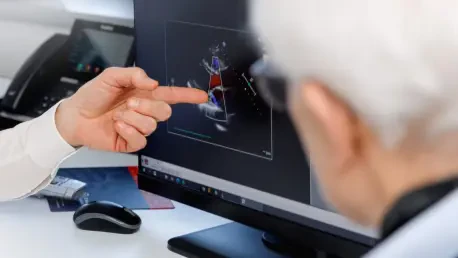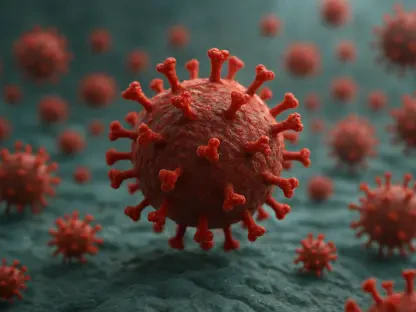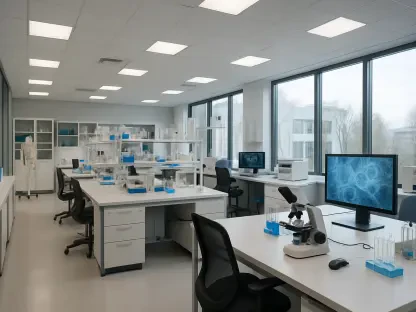The latest advancements in imaging technology are on the verge of transforming disease research, promising unparalleled insights into biological processes. Central to this evolution is the development of ultrasensitive small-animal PET scanners, spearheaded by the Imaging Physics Group at Japan’s National Institutes for Quantum Science and Technology. These revolutionary tools offer sub-second dynamic imaging capabilities, especially valuable for investigating the complexities of cardiac and neurological conditions. Traditional PET scanners, while beneficial, have struggled with limited temporal resolution, making it challenging to capture and analyze rapid biological processes like blood flow and neuronal activity in real time. With the advent of the new total-body small-animal PET (TBS-PET) scanner, significant strides have been made toward addressing these limitations, presenting exciting possibilities for future research. This innovative technology seeks to bridge the gap between existing capabilities and the demand for more precise and sensitive imaging, contributing immensely to the evolving landscape of disease research.
Breaking New Ground in Imaging Sensitivity
At the heart of the TBS-PET scanner’s transformative potential lies its remarkable boost in sensitivity and temporal resolution. The design integrates four-layer depth-encoding detectors using zirconium-doped gadolinium oxyorthosilicate (GSOZ) crystals, achieving an unprecedented total thickness of 30 mm. This enhancement greatly outperforms the conventional detection crystals that typically measure only 10 mm in thickness. As a result, the scanner achieves an impressive sensitivity of 45.0% within the 250–750 keV energy range, a figure that outshines those offered by existing commercial and laboratory models. This heightened sensitivity is particularly indispensable when imaging processes require high precision, such as monitoring cell-level interactions or evaluating new radiopharmaceuticals for cardiovascular or neurodegenerative treatments.
One of the key highlights of the TBS-PET scanner is its substantial axial field-of-view (FOV) of 325.6 mm, which allows comprehensive whole-body imaging in small animals without moving the imaging bed. This large FOV, paired with a smaller inner diameter of 155 mm, further enhances detection efficiency. This efficiency ensures consistent spatial resolution across the field. While the spatial resolution stands at about 2.6 mm due to the four-layer DOI structure, which minimizes parallax error, there is ongoing work to refine this aspect. The team is exploring new scanner designs featuring three-layer detectors with a finer crystal pitch of 0.8 mm, aiming to push spatial resolution boundaries further.
Dynamic Imaging Capabilities and Real-Time Observations
Evaluations of the TBS-PET scanner’s performance reveal its competent coincidence timing resolution of 7.9 ns and an energy resolution of 18.4%. These advancements in detector capabilities have enabled successful in vivo imaging applications on healthy rats using Na18F and 18F-FDG tracers. The Na18F tracer facilitated a detailed visualization of bone structures, while 18F-FDG highlighted glucose metabolism pathways across the animal’s body. The successful execution of these trials validates the scanner’s performance and underscores its potential for capturing complex biological dynamics in near real-time.
Particularly noteworthy is the scanner’s capacity for near real-time dynamic imaging. With an 18F-FDG bolus injection, detailed visualization of the bloodstream—from the tail through the heart to the brain—was achieved within seconds. This capacity allows the TBS-PET scanner to capture images with temporal resolution as fine as 0.25 seconds, offering critical insights into blood circulation pathways. For researchers studying cardiac functions and pulmonary circulation, the scanner provides near-instantaneous observations necessary for deciphering detailed interactions and variations, particularly in animals with cardiac ailments. Such capabilities signal a paradigm shift in how rapidly changing physiological events can be studied and understood in the research domain.
Implications for Disease Research and Future Prospects
Recent breakthroughs in imaging technology are poised to revolutionize disease research, providing unprecedented insights into biological mechanisms. At the forefront of this transformation is the development of ultrasensitive small-animal PET scanners, led by the Imaging Physics Group at Japan’s National Institutes for Quantum Science and Technology. These state-of-the-art tools enable dynamic imaging in sub-second intervals, making them particularly useful for examining complex cardiac and neurological conditions. Traditional PET scanners have been valued but often faced challenges due to their limited temporal resolution. This limitation made it difficult to capture rapid biological processes, such as blood circulation and neuronal activity, in real-time. The introduction of the total-body small-animal PET (TBS-PET) scanner marks significant progress in overcoming these barriers. This cutting-edge technology aims to fill the gap between past imaging capabilities and the growing need for more precise insights, promising to greatly enhance the landscape of future disease research.









